-
 Bitcoin
Bitcoin $83,313.6693
-1.61% -
 Ethereum
Ethereum $1,824.6416
-3.06% -
 Tether USDt
Tether USDt $0.9999
0.00% -
 XRP
XRP $2.0615
-1.92% -
 BNB
BNB $601.0287
-0.09% -
 Solana
Solana $119.7880
-4.08% -
 USDC
USDC $0.9999
-0.01% -
 Dogecoin
Dogecoin $0.1661
-3.40% -
 Cardano
Cardano $0.6510
-3.65% -
 TRON
TRON $0.2380
-0.22% -
 Toncoin
Toncoin $3.7959
-5.14% -
 UNUS SED LEO
UNUS SED LEO $9.3951
-0.16% -
 Chainlink
Chainlink $13.1588
-4.27% -
 Stellar
Stellar $0.2636
-1.98% -
 Sui
Sui $2.4047
1.82% -
 Avalanche
Avalanche $18.6850
-3.03% -
 Shiba Inu
Shiba Inu $0.0...01235
-0.22% -
 Hedera
Hedera $0.1650
-0.75% -
 Polkadot
Polkadot $4.0373
-1.82% -
 Litecoin
Litecoin $83.5682
0.58% -
 MANTRA
MANTRA $6.4443
3.75% -
 Bitcoin Cash
Bitcoin Cash $303.2630
-0.75% -
 Bitget Token
Bitget Token $4.5497
-1.20% -
 Dai
Dai $1.0000
0.00% -
 Ethena USDe
Ethena USDe $0.9998
-0.01% -
 Pi
Pi $0.6605
-4.81% -
 Hyperliquid
Hyperliquid $12.4411
-6.29% -
 Monero
Monero $216.2784
-1.00% -
 Uniswap
Uniswap $6.0092
-2.13% -
 Aptos
Aptos $5.2761
-0.41%
Different mining algorithms have different power requirements
Different mining algorithms in cryptocurrencies require varying computational power, impacting energy use and environmental footprint, crucial for miners and investors to consider.
Mar 31, 2025 at 09:49 pm

Different cryptocurrencies utilize various mining algorithms, each demanding a unique level of computational power. This variance stems from the inherent design of the algorithm itself and its susceptibility to different types of hardware. Understanding these differences is crucial for miners choosing which cryptocurrency to mine and for investors assessing the environmental impact of a particular coin.
Understanding Mining Algorithms and Power Consumption
A cryptocurrency's mining algorithm dictates the computational process needed to validate transactions and add new blocks to the blockchain. Different algorithms are designed to be more resistant to specific types of attacks, leading to variations in their computational intensity. This intensity directly translates to the amount of energy required for mining.
Proof-of-Work (PoW) algorithms, like those used by Bitcoin and Ethereum (before the Merge), are computationally intensive and require significant energy consumption. They rely on miners competing to solve complex mathematical problems, with the first to solve the problem adding the next block to the chain and receiving a reward. The complexity of these problems is adjusted to maintain a consistent block generation time, influencing power requirements.
In contrast, Proof-of-Stake (PoS) algorithms, utilized by cryptocurrencies like Cardano and Solana, generally require significantly less energy. Instead of competing to solve complex problems, validators are chosen based on the amount of cryptocurrency they stake. The selected validator then proposes and validates the next block. This process consumes far less energy than PoW.
Algorithms like Scrypt, used by Litecoin, present a different computational challenge compared to SHA-256 (Bitcoin). Scrypt is designed to be more resistant to specialized hardware, like ASICs (Application-Specific Integrated Circuits), making it more accessible to miners using CPUs and GPUs. However, this doesn't necessarily mean it's less energy-intensive; the specific hardware used will still determine the power draw.
Equihash, employed by Zcash, is another example. It's designed to be ASIC-resistant, favoring GPUs and potentially even CPUs. The algorithm's complexity and the hardware used will impact its power consumption. It's important to note that even ASIC-resistant algorithms can see the development of specialized hardware over time, potentially increasing power needs.
The power consumption of a specific mining operation also depends on factors beyond the algorithm itself. The efficiency of the mining hardware, cooling systems, and electricity costs all play a significant role. A more efficient mining rig will consume less energy for the same hashing power, while cheaper electricity significantly reduces operational costs.
Choosing the right algorithm for mining depends on various factors. Miners often consider the profitability of mining a particular cryptocurrency, taking into account the difficulty of the algorithm, the block reward, and the price of the cryptocurrency. The power consumption is a critical factor in profitability calculations, as higher energy costs directly impact the net profit.
Furthermore, the environmental impact of cryptocurrency mining is a growing concern. The high energy consumption of PoW algorithms has led to criticism regarding their carbon footprint. The shift towards PoS algorithms represents a significant effort to reduce this environmental impact.
Mining different cryptocurrencies using different algorithms involves a complex interplay of factors. The algorithm's inherent complexity, the choice of mining hardware, its efficiency, and electricity costs all contribute to the overall power consumption. Miners need to carefully weigh these factors to maximize profitability while minimizing environmental impact.
Factors Affecting Power Consumption Beyond the Algorithm
Several factors beyond the chosen mining algorithm influence the total power consumption:
- Hardware Efficiency: Modern, purpose-built ASICs are significantly more energy-efficient than older models or general-purpose hardware like GPUs or CPUs for algorithms they are designed for.
- Cooling Solutions: Effective cooling systems are crucial. Overheating leads to reduced efficiency and increased power consumption. Proper ventilation and cooling solutions are essential for optimal performance.
- Electricity Costs: The price of electricity varies significantly across regions. Mining in areas with low electricity costs is more economically viable.
- Overclocking: Pushing hardware beyond its recommended specifications can increase its hashing power, but it also dramatically increases power consumption and potentially reduces the lifespan of the equipment.
- Software Optimization: Efficient mining software can optimize the use of hardware resources, reducing unnecessary power consumption.
Algorithm-Specific Power Consumption Considerations
Each algorithm presents unique challenges and opportunities regarding power consumption:
- SHA-256 (Bitcoin): Highly energy-intensive due to its reliance on ASICs. The sheer scale of the Bitcoin network contributes to its substantial overall power consumption.
- Scrypt (Litecoin): Less susceptible to ASIC dominance, allowing for GPU mining, which generally consumes less power than ASICs per unit of hashing power.
- Ethash (Ethereum - pre-Merge): Designed to be ASIC-resistant, relying heavily on GPUs, making it relatively less energy-intensive compared to SHA-256 but still considerable.
- Equihash (Zcash): Also ASIC-resistant, favoring GPUs, offering a balance between security and energy consumption.
- Proof-of-Stake (Various): Significantly lower energy consumption than PoW algorithms as it doesn't require solving complex computational problems.
Frequently Asked Questions
Q: What is the most energy-efficient mining algorithm?
A: Proof-of-Stake (PoS) algorithms are generally the most energy-efficient, requiring significantly less energy than Proof-of-Work (PoW) algorithms.
Q: Can I mine cryptocurrency without using a lot of power?
A: Mining cryptocurrencies using PoS algorithms requires less power. You can also participate in mining pools, which distribute the workload and power consumption across multiple participants.
Q: How does the choice of hardware affect power consumption in cryptocurrency mining?
A: The efficiency of your mining hardware (ASICs, GPUs, CPUs) significantly impacts power consumption. More efficient hardware consumes less energy for the same hashing power. Cooling solutions also play a vital role.
Q: What is the environmental impact of different mining algorithms?
A: PoW algorithms have a much larger environmental impact due to their high energy consumption. PoS algorithms are considerably more environmentally friendly. The overall impact also depends on the source of the electricity used.
Q: Are there any alternative consensus mechanisms besides PoW and PoS?
A: Yes, several alternative consensus mechanisms exist, such as Proof-of-Authority (PoA), Proof-of-History (PoH), and Delegated Proof-of-Stake (DPoS), each with varying levels of energy efficiency. These are less common than PoW and PoS.
Disclaimer:info@kdj.com
The information provided is not trading advice. kdj.com does not assume any responsibility for any investments made based on the information provided in this article. Cryptocurrencies are highly volatile and it is highly recommended that you invest with caution after thorough research!
If you believe that the content used on this website infringes your copyright, please contact us immediately (info@kdj.com) and we will delete it promptly.
- Looking Past the Plateau: Where the Momentum Is Now
- 2025-04-03 12:15:13
- Coincodex's machine learning algorithm predicts Dogecoin (DOGE) price surge to $0.57
- 2025-04-03 12:15:13
- Pi Network (PI) Price Drops 20% as Investors Call for Leadership Changes
- 2025-04-03 12:10:13
- BlockDAG's Beta Testnet Ignites Real Adoption While ADA Eyes $0.85 and Ripple Slashes SEC Fine
- 2025-04-03 12:10:12
- Meme-powered tokens like Official Trump and Bonk have lost their steam
- 2025-04-03 12:05:13
- VanEck Launches a New Financial Product Tied to Celestia's (TIA) Blockchain
- 2025-04-03 12:05:13
Related knowledge
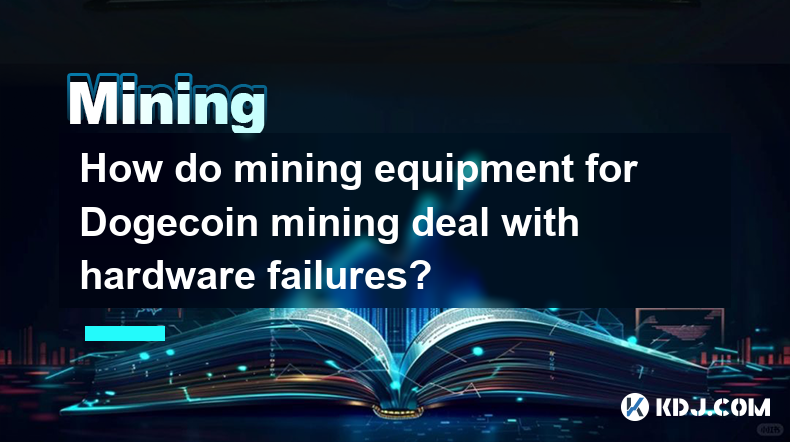
How do mining equipment for Dogecoin mining deal with hardware failures?
Apr 03,2025 at 09:15am
Dogecoin mining, like other forms of cryptocurrency mining, relies heavily on specialized hardware to perform the necessary computations to mine new coins. However, as with any technology, mining equipment can encounter hardware failures. This article will explore how mining equipment for Dogecoin mining deals with such failures, covering various aspect...
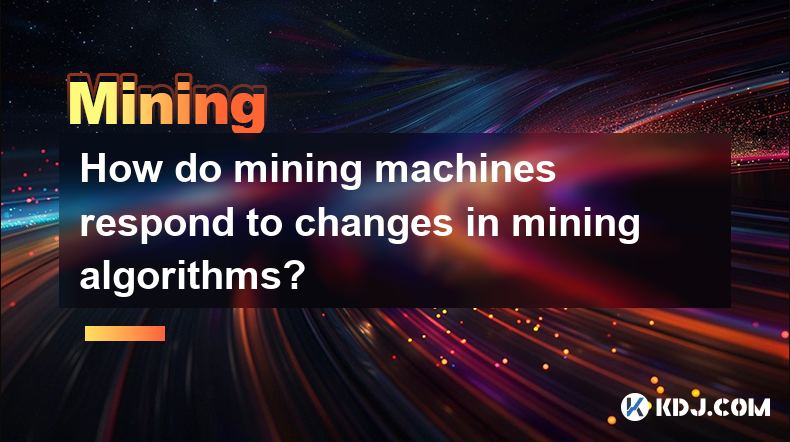
How do mining machines respond to changes in mining algorithms?
Apr 03,2025 at 07:07am
Mining machines are essential components of the cryptocurrency ecosystem, particularly for Proof of Work (PoW) blockchains like Bitcoin. These machines are designed to solve complex mathematical problems to validate transactions and add them to the blockchain. However, the algorithms that govern these mining processes can change, impacting the efficienc...
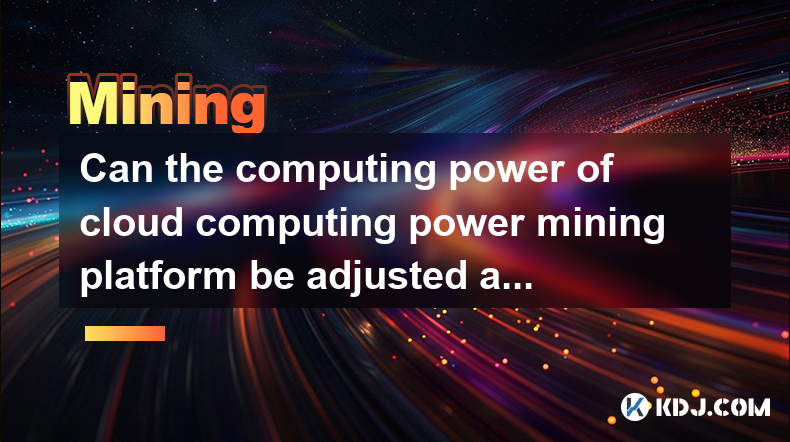
Can the computing power of cloud computing power mining platform be adjusted at any time?
Apr 03,2025 at 07:28am
Introduction to Cloud Computing Power Mining PlatformsCloud computing power mining platforms have revolutionized the way individuals and organizations participate in cryptocurrency mining. These platforms allow users to rent computing power from a pool of resources, enabling them to mine cryptocurrencies without the need for expensive hardware. A common...

How to balance mining income with graphics card power consumption?
Apr 03,2025 at 09:57am
Balancing mining income with graphics card power consumption is a critical consideration for cryptocurrency miners. The profitability of mining depends not only on the revenue generated from mining but also on the costs associated with running the mining equipment. Graphics cards, which are commonly used for mining, consume significant amounts of electr...
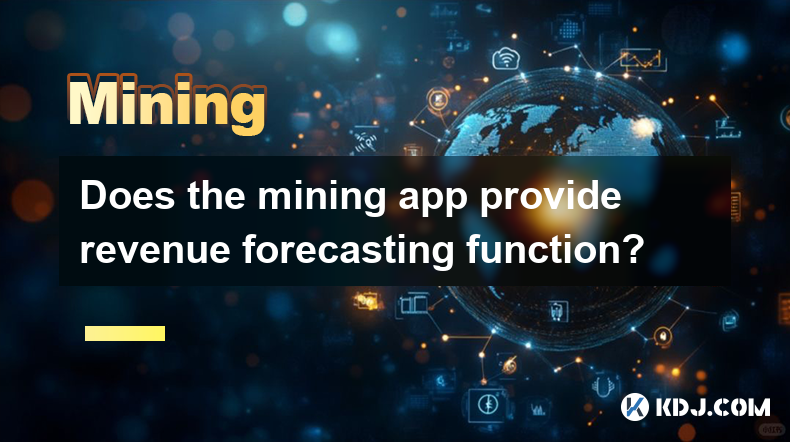
Does the mining app provide revenue forecasting function?
Apr 03,2025 at 07:22am
In the world of cryptocurrency, mining apps have become essential tools for miners looking to maximize their profits. One key feature that many miners seek in these apps is a revenue forecasting function. This article will explore whether mining apps provide such a function, how it works, and what benefits it offers to users. What is a Revenue Forecast...
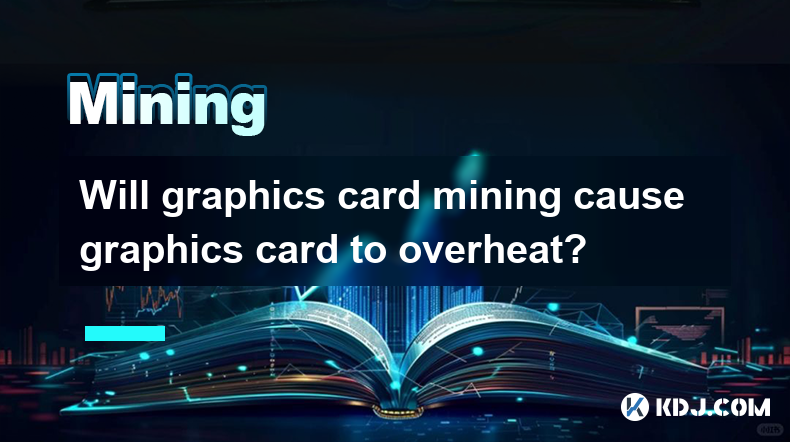
Will graphics card mining cause graphics card to overheat?
Apr 03,2025 at 06:49am
Mining cryptocurrencies with graphics cards has become increasingly popular, but it raises concerns about the potential for overheating. Graphics cards are designed to handle high-performance tasks, but continuous mining can push them to their limits. The heat generated during mining can affect the card's performance and longevity. Understanding the fac...

How do mining equipment for Dogecoin mining deal with hardware failures?
Apr 03,2025 at 09:15am
Dogecoin mining, like other forms of cryptocurrency mining, relies heavily on specialized hardware to perform the necessary computations to mine new coins. However, as with any technology, mining equipment can encounter hardware failures. This article will explore how mining equipment for Dogecoin mining deals with such failures, covering various aspect...

How do mining machines respond to changes in mining algorithms?
Apr 03,2025 at 07:07am
Mining machines are essential components of the cryptocurrency ecosystem, particularly for Proof of Work (PoW) blockchains like Bitcoin. These machines are designed to solve complex mathematical problems to validate transactions and add them to the blockchain. However, the algorithms that govern these mining processes can change, impacting the efficienc...

Can the computing power of cloud computing power mining platform be adjusted at any time?
Apr 03,2025 at 07:28am
Introduction to Cloud Computing Power Mining PlatformsCloud computing power mining platforms have revolutionized the way individuals and organizations participate in cryptocurrency mining. These platforms allow users to rent computing power from a pool of resources, enabling them to mine cryptocurrencies without the need for expensive hardware. A common...

How to balance mining income with graphics card power consumption?
Apr 03,2025 at 09:57am
Balancing mining income with graphics card power consumption is a critical consideration for cryptocurrency miners. The profitability of mining depends not only on the revenue generated from mining but also on the costs associated with running the mining equipment. Graphics cards, which are commonly used for mining, consume significant amounts of electr...

Does the mining app provide revenue forecasting function?
Apr 03,2025 at 07:22am
In the world of cryptocurrency, mining apps have become essential tools for miners looking to maximize their profits. One key feature that many miners seek in these apps is a revenue forecasting function. This article will explore whether mining apps provide such a function, how it works, and what benefits it offers to users. What is a Revenue Forecast...

Will graphics card mining cause graphics card to overheat?
Apr 03,2025 at 06:49am
Mining cryptocurrencies with graphics cards has become increasingly popular, but it raises concerns about the potential for overheating. Graphics cards are designed to handle high-performance tasks, but continuous mining can push them to their limits. The heat generated during mining can affect the card's performance and longevity. Understanding the fac...
See all articles
























































































